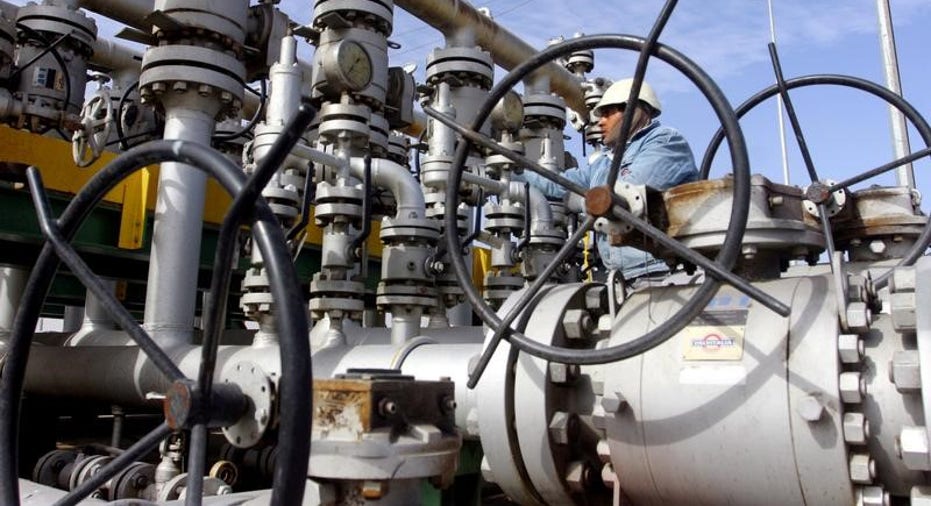Oil Drops on Worries of Swelling U.S. Stockpiles

Oil prices fell 1.5 percent on Wednesday on expectations of another surge in U.S. inventories, retreating from multi-week highs hit in the previous session after OPEC signaled optimism over its deal with other producers to curb output.
U.S. crude stocks likely rose 3.5 barrels last week, its seventh straight build, analysts polled ahead of weekly inventory reports from industry group the American Petroleum Institute (API) and the U.S. Department of Energy's Energy Information Administration (EIA) estimated.
The API is scheduled to release its data at 4:30 p.m. EST (2130 GMT), while EIA data is due at 11 a.m. EST on Thursday, both delayed a day because of a holiday on Monday.
Brent crude ended 82 cents, or 1.5 percent, lower at $55.84 a barrel, having touched its highest since Feb. 2 at $57.31 in the previous session.
The U.S. West Texas Intermediate crude April contract , the new front-month future, settled 74 cents, or 1.4 percent, lower at $53.59.
Despite the swelling inventories, analysts and traders were largely optimistic about the sustainability of the rally in prices over the last four sessions.
"We've seen a fairly significant increase in crude stocks since the beginning of the year and yet the market has been able to maintain its relative buoyancy," Andrew Lebow, senior partner at Commodity Research Group in Darien, Connecticut, said.
"I think the underlying sentiment is bullish ... what's been key to the market is you've seen the tightening of the spreads, especially in the front."
During a two-year period of oversupply, the contango or time spread between contracts in the futures markets - when prompt barrels are cheaper than later supplies - deepened.
But the contango has narrowed since the start of the year, when a deal under the Organization of the Petroleum Exporting Countries' umbrella to cut global output took effect, suggesting that the oversupply could be abating.
The discount of the prompt WTI contract to the second month <CLc1-CLc2> tightened to as little as 26 cents per barrel on Wednesday, its narrowest since Oct. 20.
Brent crude's spread <LCOc1-LCOc2> came within cents of flipping into backwardation - when prompt supplies become most expensive compared with later deliveries - on Tuesday amid optimism over the OPEC deal.
On Tuesday, OPEC Secretary General Mohammad Barkindo said the group and other producers including Russia will boost compliance with agreed output curbs in a bid to boost prices.
Eleven non-OPEC oil producers that joined the OPEC deal have delivered at least 60 percent of promised curbs so far, OPEC sources said on Wednesday, higher than initially estimated.
Goldman Sachs reiterated its outlook for a recovery in prices in the second quarter - WTI to rise to $57.50 and Brent to $59 - before declining respectively to $55 and $57 for the rest of the year.
The investment bank said "while the reduction in oil supplies out of core OPEC in the Gulf and Russia has exceeded our and consensus expectations, the market is starting to doubt that this will be sufficient to translate into large oil inventory draws by the second quarter."



















